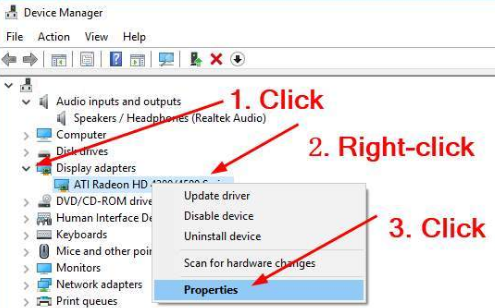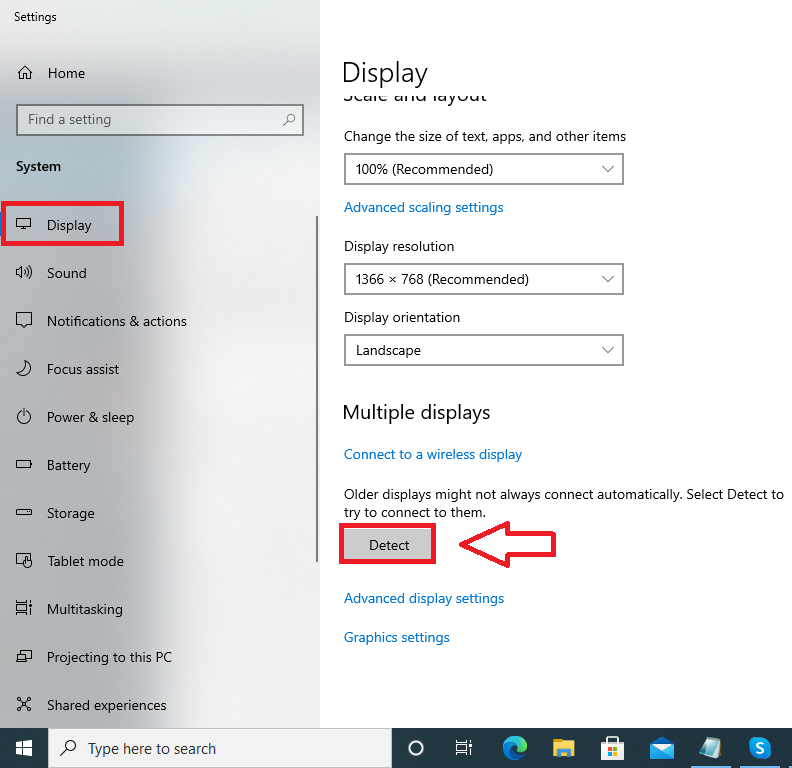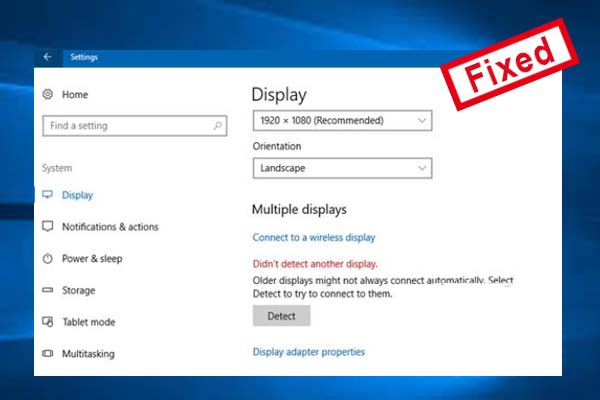Second monitor not working? Check the cable connections and ensure the correct display settings are configured.
Experiencing issues with your second monitor can be frustrating. Many factors can cause this problem, from loose cables to incorrect display settings. It’s essential to troubleshoot methodically to identify the root cause. Start by inspecting the physical connections, ensuring all cables are securely plugged in.
Next, verify that your computer recognizes the second monitor in the display settings. Sometimes, outdated drivers or software conflicts may also be to blame. Updating your graphics drivers can often resolve these issues. By systematically addressing each potential cause, you can quickly get your second monitor up and running, enhancing your productivity and screen real estate.

Credit: m.youtube.com
Common Causes
Is your second monitor not working? There are several reasons for this issue. Understanding common causes can help fix the problem quickly. Below, we explore the main causes in detail.
Connection Issues
One common cause is connection issues. Ensure cables are securely connected. Loose cables can disrupt the connection.
- Check both ends of the cable.
- Try a different cable if available.
- Verify that the cable is not damaged.
Sometimes, the port may be the problem. Try using another port on your computer. If using an adapter, ensure it is working correctly.
Hardware Problems
Another reason could be hardware problems. Ensure the monitor is powered on. Sometimes, the monitor itself is faulty.
- Check the power connection.
- Ensure the monitor is switched on.
- Try using the monitor on another computer.
Graphics card issues can also cause problems. Ensure your graphics card supports multiple monitors. Update the graphics driver to the latest version.
| Potential Issue | Solution |
|---|---|
| Loose or Damaged Cable | Secure or replace the cable |
| Faulty Monitor | Test with another monitor |
| Graphics Card | Update driver or replace card |
By checking these common causes, you can often resolve the issue quickly.
Check Cables
One common issue for a second monitor not working is cable problems. Ensuring cables are connected properly can fix display issues quickly. This section will cover checking HDMI and DisplayPort cables.
Hdmi
HDMI cables are popular for connecting monitors. Start by checking both ends of the HDMI cable. Make sure it is securely plugged into both the monitor and the computer.
If the cable is loose, the signal may not transmit correctly. Try using a different HDMI cable to see if the cable itself is faulty.
You can also check if the computer recognizes the monitor. Go to your display settings and see if the second monitor is detected.
Displayport
DisplayPort cables are another option for connecting monitors. Just like with HDMI, ensure the DisplayPort cable is firmly connected at both ends.
Check for any visible damage on the cable. Replace the cable if you see any wear and tear.
Verify that the computer recognizes the monitor in the display settings. Sometimes, updating your graphics drivers can resolve issues with DisplayPort connections.
| Checkpoints | HDMI | DisplayPort |
|---|---|---|
| Check Connection | Ensure both ends are secure | Ensure both ends are secure |
| Look for Damage | Inspect cable for wear | Inspect cable for wear |
| Try Another Cable | Test with a new cable | Test with a new cable |
| Update Drivers | Check display settings | Update graphics drivers |
Update Drivers
Updating drivers can often fix the issue of a second monitor not working. Outdated drivers may not support new hardware or software configurations. Keeping your drivers updated ensures compatibility and optimal performance.
Graphics Card
Your graphics card drivers need to be up-to-date. An outdated graphics card driver can cause display issues.
- Open Device Manager
- Expand the “Display adapters” section
- Right-click on your graphics card
- Select “Update driver”
- Choose “Search automatically for updated driver software”
If the automatic search does not find a new driver, visit the manufacturer’s website. Download and install the latest driver for your graphics card model.
Monitor
Monitor drivers can also affect the performance of your second display. Although many monitors work with generic drivers, some require specific drivers for full functionality.
- Open Device Manager
- Expand the “Monitors” section
- Right-click on your second monitor
- Select “Update driver”
- Choose “Search automatically for updated driver software”
If no updates are found automatically, check the monitor manufacturer’s website. Download and install the latest driver for your monitor model.
| Component | Steps to Update Driver |
|---|---|
| Graphics Card |
|
| Monitor |
|
Updating both the graphics card and monitor drivers can resolve many display issues. Keeping your drivers current is essential for a smooth and functional setup.
Adjust Display Settings
Encountering issues with your second monitor can be frustrating. One common solution is to adjust your display settings. Fine-tuning these settings can often resolve the problem and get your second screen working seamlessly.
Screen Resolution
First, check the screen resolution of your second monitor. Sometimes, the resolution may not match your primary display, causing conflicts.
- Right-click on the desktop and select “Display settings”.
- Scroll down to the “Resolution” drop-down menu.
- Choose the recommended resolution for your second monitor.
Ensure both screens have compatible resolutions. This can help in avoiding display issues.
Multiple Displays
Next, configure settings under the Multiple Displays section. This is crucial for extending or duplicating your screen.
- Go to “Display settings”.
- Scroll to the “Multiple displays” section.
- Select either “Extend these displays” or “Duplicate these displays”.
Choosing “Extend these displays” will allow you to use both monitors as one large workspace. “Duplicate these displays” will mirror your primary screen onto the second monitor.
If the second monitor still doesn’t work, try the Detect button. This can help your computer recognize the additional display.
| Option | Description |
|---|---|
| Extend | Use both monitors as one large screen. |
| Duplicate | Mirror the primary screen onto the second monitor. |
| Detect | Identify additional displays connected to your computer. |
Adjusting these display settings can often resolve second monitor issues. Make sure to save any changes you make.
Test With Another Device
When your second monitor stops working, it can disrupt your workflow. One of the first troubleshooting steps is to test with another device. This helps identify whether the issue lies with the monitor or the computer. By isolating the problem, you can find a solution faster.
Different Computer
Connect your second monitor to a different computer. This step checks if the problem is with your original computer.
- Use a laptop or another desktop.
- Ensure the cables are securely connected.
- Turn on the second monitor.
If the second monitor works with a different computer, the issue is likely with your original computer.
Alternate Monitor
Test your original computer with an alternate monitor. This helps determine if the issue lies with the second monitor.
- Find another monitor to use.
- Connect it to your original computer.
- Check if the new monitor works.
If the new monitor works, then your original second monitor might be faulty.
Testing with another device is a quick way to identify the problem. It saves you time and helps you find the right solution.

Credit: www.drivers.com
Inspect Hardware
Is your second monitor not working? Start by inspecting the hardware. Often, the issue lies within the physical components. This section will help you identify and resolve hardware-related problems.
Monitor Condition
First, check the condition of your monitor. Ensure it turns on and displays content properly. Follow these steps:
- Press the power button. Observe any lights or sounds.
- Check for visible damage on the screen.
- Test the monitor with another device. Confirm it works.
If your monitor shows signs of damage, it may need repair or replacement.
Port Damage
Next, inspect the ports on your computer and monitor. Damaged ports can prevent a connection. Here’s how to check:
- Look at the ports closely. Ensure they are not bent or broken.
- Try connecting the monitor to a different port.
- Use a different cable to rule out cable issues.
Testing different ports and cables helps identify the faulty component.
| Port Type | Common Issues |
|---|---|
| HDMI | Loose connections, bent pins |
| VGA | Broken pins, dust buildup |
| DisplayPort | Loose fit, connector damage |
Keep your ports clean and check them regularly for damage. This ensures a stable connection.
Operating System Settings
Second monitor not working? It could be your operating system settings. Understanding how to adjust these settings can help. Below are steps for both Windows and Mac operating systems. Follow these instructions to troubleshoot and get your second monitor working again.
Windows
If your second monitor is not working on Windows, check the display settings. Here is a step-by-step guide:
- Right-click on the desktop and select Display settings.
- Scroll down to the Multiple displays section.
- Click on Detect to find the second monitor.
- Select Extend these displays from the dropdown menu.
- Adjust the resolution and orientation as needed.
Ensure your cables are connected properly. Sometimes, a loose connection can cause issues. If the second monitor still doesn’t work, update your graphics driver. Outdated drivers can create problems with display settings.
Mac
For Mac users, adjusting the display settings can help. Follow these steps:
- Click on the Apple menu and select System Preferences.
- Choose Displays from the available options.
- Click on the Arrangement tab.
- Drag the displays to arrange them as you like.
- Ensure the Mirror Displays box is unchecked for extended display.
Also, check the cable connections and ensure they are secure. If the monitor is still not detected, try restarting your Mac. Sometimes a simple restart can solve the problem. If that does not work, consider updating your macOS for better compatibility.

Credit: www.electronicshub.org
Reboot And Reconnect
Having trouble with your second monitor not working? Sometimes the simplest solutions can solve the problem. One of the most effective methods is to reboot and reconnect your devices. This method often resolves common connectivity issues. Below, we will discuss how to power cycle and reconnect cables to get your second monitor up and running.
Power Cycle
Power cycling your devices can refresh their connection. Follow these steps:
- Turn off your computer and monitor.
- Unplug the power cables from both devices.
- Wait for at least 30 seconds.
- Plug the power cables back in.
- Turn on your monitor first, then your computer.
This simple process can often fix connectivity issues. Ensure all devices are fully powered up before proceeding to the next step.
Reconnect Cables
Reconnecting your cables can ensure a stable connection. Here are the steps:
- Turn off your monitor and computer.
- Disconnect the video cable from both the computer and the monitor.
- Inspect the cable for any signs of damage.
- If the cable looks fine, reconnect it securely to both devices.
- Turn on your monitor first, then your computer.
Using a different video cable can also help. Sometimes, cables can get worn out over time. Ensure the cable fits snugly and clicks into place.
Below is a simple table summarizing the steps:
| Step | Action |
|---|---|
| 1 | Turn off devices |
| 2 | Unplug power cables |
| 3 | Wait 30 seconds |
| 4 | Reconnect and power on |
| 5 | Check video cables |
By following these steps, you can often resolve issues with your second monitor. If these methods don’t work, further troubleshooting may be needed. Always check your connections and power sources first.
Check For Interference
When your second monitor is not working, interference might be the culprit. Interference can disrupt the signal between your computer and the monitor. Let’s explore some common sources of interference.
Electromagnetic Interference
Electromagnetic Interference (EMI) can cause your second monitor to malfunction. EMI occurs when electronic devices emit electromagnetic waves. These waves can interfere with your monitor’s signal.
To reduce EMI, keep electronic devices away from your monitor. This includes devices like routers, microwaves, and cordless phones.
Nearby Devices
Nearby devices can also cause interference. Devices like smartphones, tablets, and other monitors can disrupt the signal.
Ensure these devices are placed at a safe distance from your monitor.
Below is a table showing devices and recommended distances:
| Device | Recommended Distance |
|---|---|
| Router | 3 feet |
| Microwave | 5 feet |
| Smartphone | 1 foot |
By checking for interference, you can often solve the issue of a second monitor not working. Remember to keep electronic devices and EMI sources at a distance. Your monitor’s performance will improve.
Seek Professional Help
When your second monitor stops working, it can be very frustrating. Sometimes, simple troubleshooting steps fail to resolve the issue. In such cases, it may be best to seek professional help. This could save time and prevent further complications.
Technical Support
Professional technical support can diagnose complex issues. These experts have the tools and knowledge to identify hardware or software problems. They can help reconfigure your system settings correctly. This ensures your second monitor functions as expected.
- Expert diagnosis
- Advanced troubleshooting
- Correct system configuration
Technical support can also assist with driver updates. This is crucial for multi-monitor setups. Keeping your drivers updated can prevent many common issues.
Repair Services
If the issue persists, consider professional repair services. These services can address hardware faults you may not detect. Certified technicians can replace damaged components and restore functionality.
| Service | Benefits |
|---|---|
| Component Replacement | Fixes physical damages |
| Screen Repair | Restores display quality |
| Cable Check | Ensures proper connections |
Repair services can also help with cable issues. Proper cable connections are essential for dual monitor setups. Technicians can check and replace faulty cables if needed.
Frequently Asked Questions
Why Is My 2nd Monitor Not Displaying?
Check the cable connections and ensure the monitor is powered on. Update your graphics drivers. Adjust display settings in your operating system.
Why Did My Second Monitor Stop Connecting?
Your second monitor may have stopped connecting due to loose cables, outdated drivers, or incorrect display settings. Check connections and update drivers. Ensure the monitor is set as an extended display.
Why Is My Second Monitor Not Receiving Signal?
Your second monitor might not receive a signal due to loose cables, incorrect input settings, or outdated drivers. Ensure all connections are secure and settings are correct. Update your graphics drivers if needed.
Conclusion
Resolving second monitor issues can enhance productivity and multitasking. Follow the steps mentioned to troubleshoot effectively. Ensure cables and settings are correct. Update drivers and check for hardware issues. With patience and attention, you can enjoy a seamless dual-monitor experience.
For persistent problems, consider seeking professional assistance.

Hello Good People! This is Pavel and Welcome to PC Delight!
I’m an Electronics Engineer by profession with a passion for Gaming & PC builds. When I came up with the idea for PC Delight, it was my goal to share & offer the very best PC building ideas to tech-loving people like myself.
Since my school days, I’ve been just addicted to gaming & PCs. That leads me to experiment with various ways around the very niche, resulting in great productivity. And I’m here to share those practical experiences. So that next time you start some experiment with your PC builds or struggle to cope with a certain game, I’m here with the solutions. With these philosophies, I started my journey in 2017 and just kept going.
